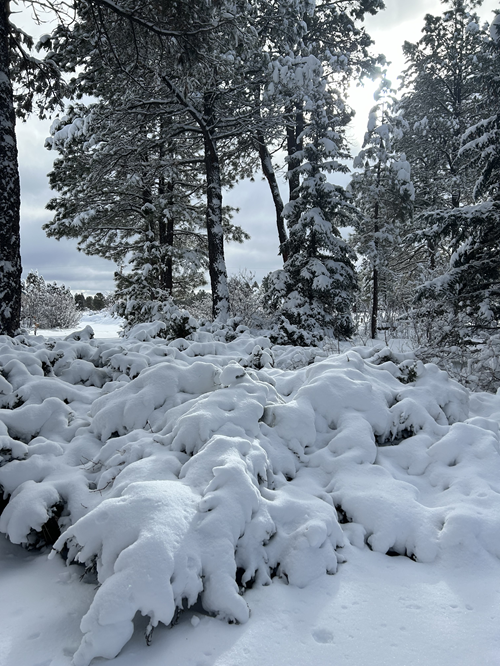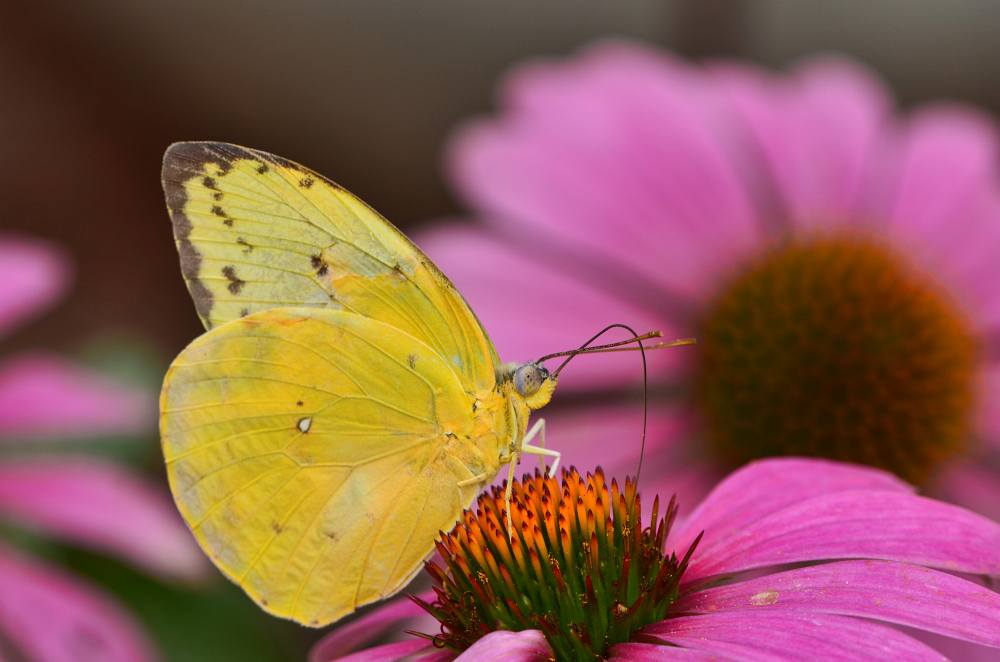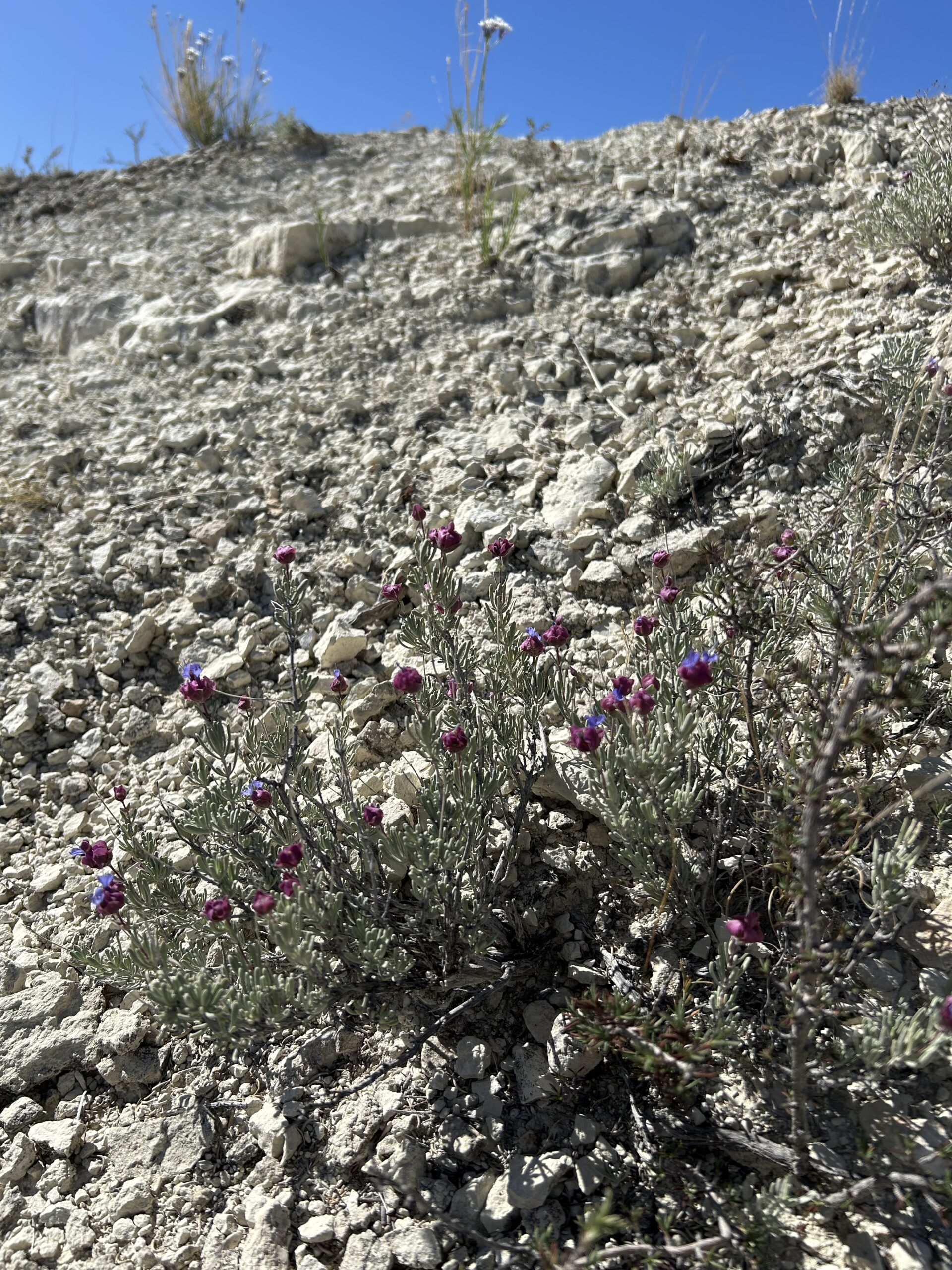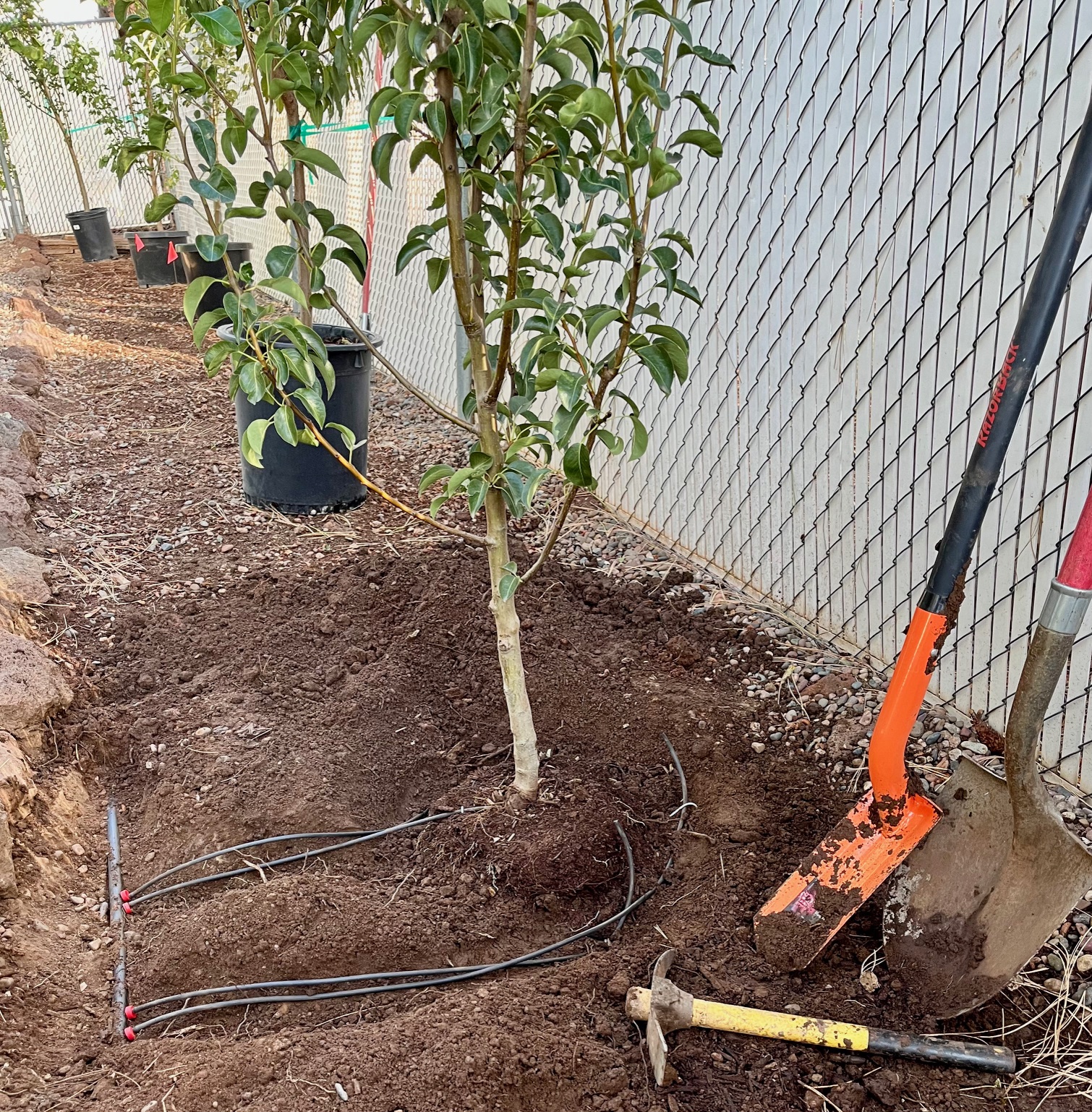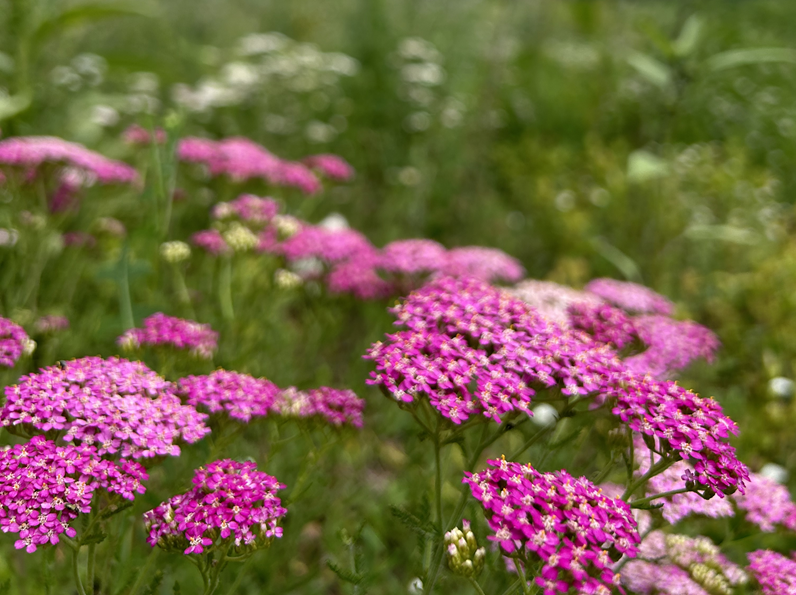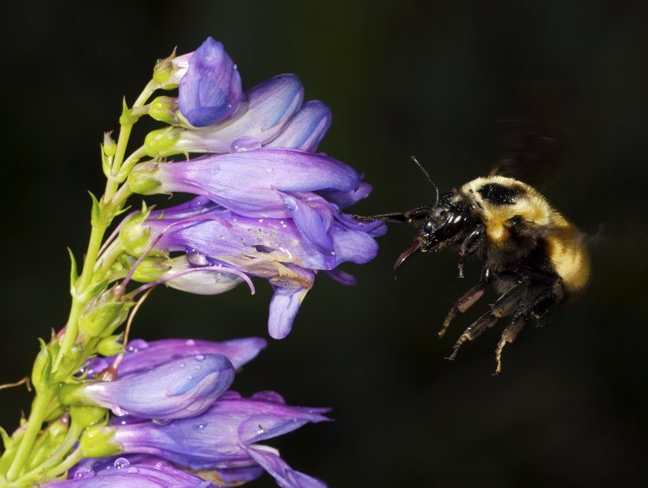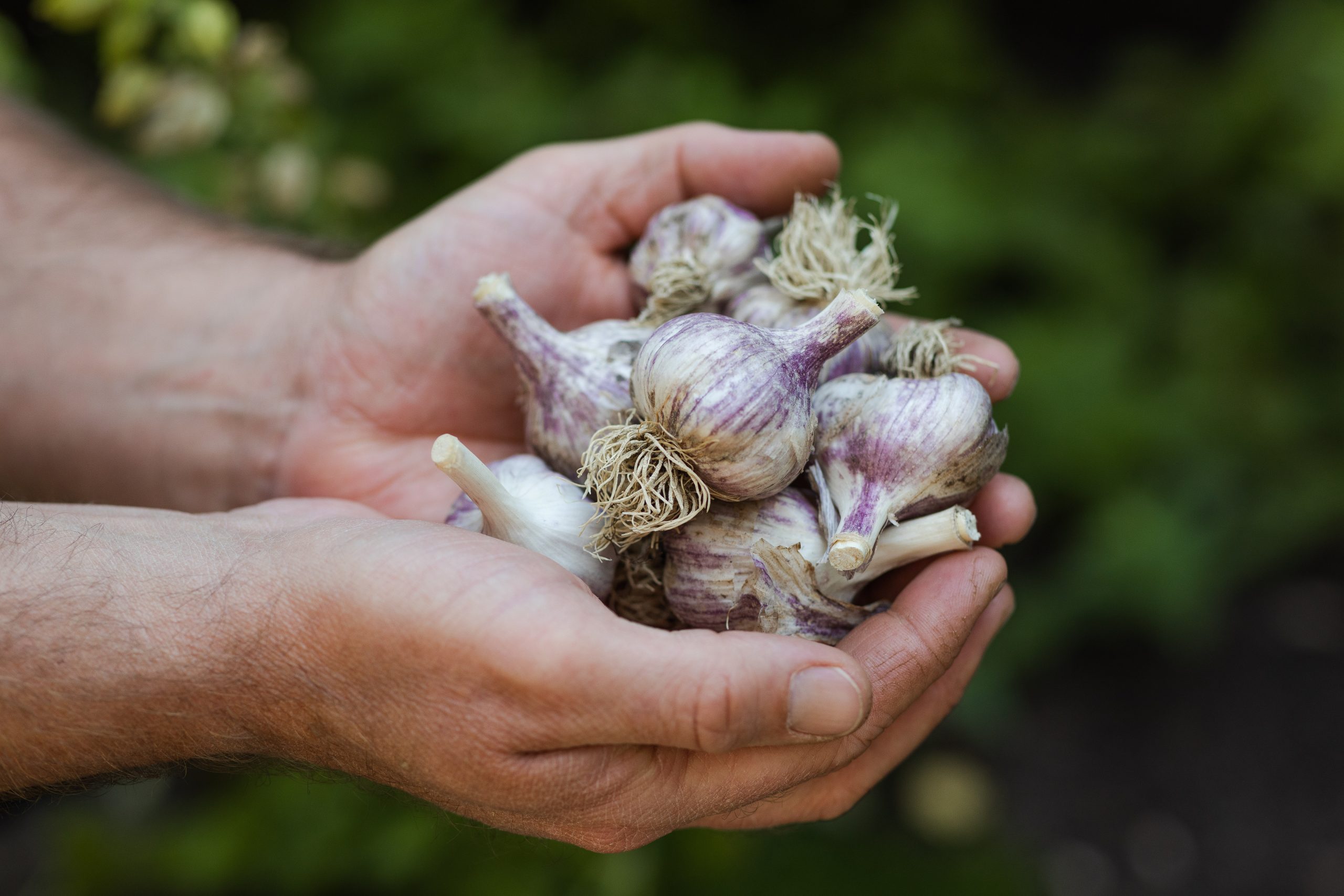Apart from the evergreens, most Flagstaff gardens are a variety of brown and gray hues this time of year. While this winter color palette holds its own kind of beauty, I can never resist visualizing all the color that will arrive with the onset of spring warmth. This kind of dreaming is fun and exciting, but it is also essential to pay close attention to what is happening in your garden during the winter dormancy. With close observation, you can create a beautiful and, most importantly, successful summer garden design.
The winter elements of wind and snow will highlight the areas of your garden that receive the most sunlight and protection. As the wind blows, follow the blowing leaves and observe where they end up. The areas where they congregate reveal the more protected areas of your garden, whereas the bare ground sections provide good airflow. Sensitive plants that prefer a bit of protection like columbines or alliums are perfect for the more protected areas, while plants with strong roots like junipers, sages and many hardy perennials will prefer the breeze and exposure.
Snow is also a great indicator for planting locations. The next time it snows (which will hopefully be soon) watch where the snow accumulates. Are there spots where it piles up and other areas where there is not much at all? The latter is often the protected, often shadier areas of the garden. Take note of where the snow melts the fastest. These areas tend to be the full sun locations that have good drainage (excellent for penstemons!)
Observing these elemental interactions with your landscape will also reveal the microclimates within your garden. Since there isn’t snow on the ground yet, go out and see if there are any areas where there is still green. These are the warmer areas of your garden, perfect for those summer tomatoes.
Gina Goegan is the Greenhouse Manager at The Arboretum

